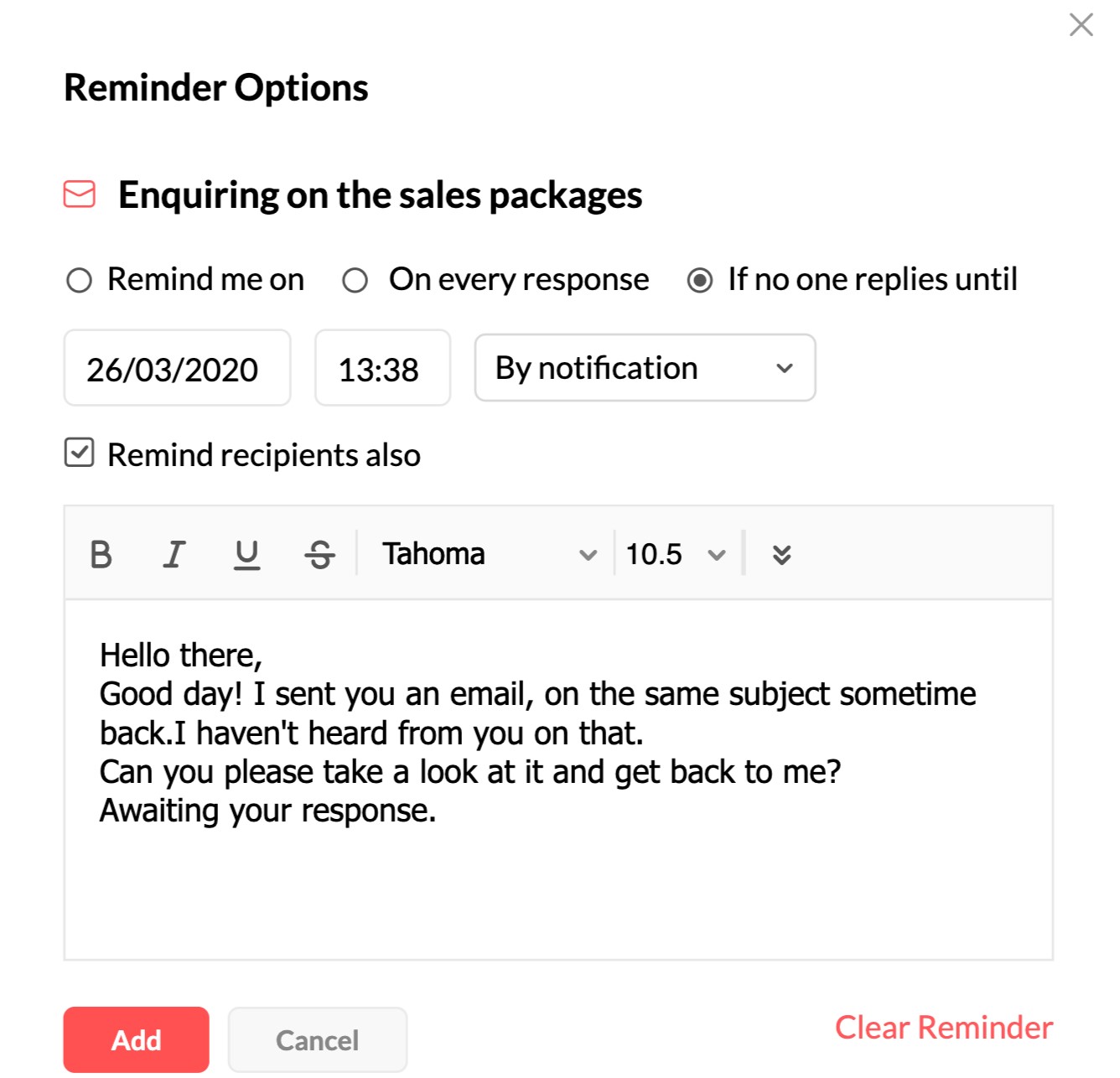Introduction
Welcome to our comprehensive guide on how to write a professional two-week notice email. Whether you have found a new job opportunity, decided to pursue further education, or simply need a career change, resigning from your current position requires proper etiquette and effective communication. Submitting a formal two-week notice email is an essential step in the resignation process, as it provides your employer with ample time to find a suitable replacement and ensure a smooth transition.
In this guide, we will walk you through the essential elements of writing a well-crafted two-week notice email. From selecting an appropriate subject line and salutation to clearly stating your resignation and offering assistance during the transition period, we have got you covered. We will also provide tips on how to maintain a positive and professional tone throughout the email, leaving a lasting impression on your colleagues and superiors.
Resigning from a job can be a daunting task, but with our expert advice and step-by-step instructions, you will feel confident and prepared to deliver your two-week notice email effectively. So let’s dive in and learn how to navigate this crucial aspect of your professional career.
Subject Line
When writing a two-week notice email, the subject line plays a crucial role in grabbing the attention of your recipient and clearly indicating the purpose of your email. A well-crafted subject line ensures that your email is easily distinguishable from the countless others in your recipient’s inbox and conveys the urgency and importance of your message.
When choosing a subject line for your two-week notice email, it is best to keep it concise and specific. Clearly mention your intention to resign and include your name and the effective date of your resignation. For example, a suitable subject line could be, “Resignation – John Doe – Effective Date: [Date].”
Avoid using vague or misleading subject lines that may cause confusion or delay in the communication process. Refrain from using overly dramatic or emotional language that could negatively impact your professional reputation. Instead, keep it professional, straightforward, and focused on the purpose of your email.
Remember, the subject line is the first thing your recipient will see, so make sure it accurately reflects the content and importance of your two-week notice email. By choosing a clear and concise subject line, you will ensure that your message is noticed and given the attention it deserves.
Salutation
The salutation in your two-week notice email sets the tone for your communication and demonstrates your professionalism. It is important to address your recipient in a respectful and appropriate manner, especially when resigning from your position.
Typically, you should address your email to your immediate supervisor or the person responsible for managing employee resignations. If you are uncertain about who to address, consult your employee handbook or reach out to the human resources department for guidance.
When addressing your recipient, use their preferred form of address. If you have a formal relationship, it is best to use their full name and appropriate title, such as “Dear Mr. Smith” or “Dear Ms. Johnson.” If you have a more informal relationship, you may opt for a first name basis, such as “Dear John” or “Dear Emily.”
Always ensure that you double-check the spelling of the recipient’s name and their preferred form of address. Incorrectly addressing your recipient can give a negative impression and undermine the professionalism of your email.
If you are unsure about the formality of your relationship with the recipient, it is safer to err on the side of formality. Remember, it is better to be overly respectful than to risk appearing too casual or disrespectful.
By using an appropriate salutation, you demonstrate your professionalism and respect for your recipient, setting a positive tone for the rest of your two-week notice email.
Clear and Concise Statement of Resignation
One of the most critical elements of your two-week notice email is the clear and concise statement of resignation. This is where you formally inform your employer of your decision to resign from your position.
Begin this section with a direct and straightforward statement expressing your intention to resign. Clearly state that you are submitting your two-week notice and specify the effective date of your resignation. For example, you can write, “I am writing to formally resign from my position at [Company Name], effective [Date].”
Avoid going into unnecessary detail or providing lengthy explanations for your decision to resign. Keep your statement of resignation concise and to the point. If you feel inclined to share your reasons for resigning, it is better to do so in a separate conversation or during an exit interview.
It is also important to maintain a positive tone throughout your statement of resignation. Refrain from expressing any negative feelings or grievances towards the company or your colleagues. Instead, focus on expressing gratitude for the opportunities and experiences you have had during your time with the company.
By keeping your statement of resignation clear, concise, and positive, you ensure that your intention to resign is understood without any room for ambiguity or confusion. This will help to maintain a professional and amicable relationship with your employer during your remaining time at the company.
Effective Date of Resignation
The effective date of your resignation is an important detail that should be clearly communicated in your two-week notice email. This date signifies when your employment with the company will officially end and helps your employer plan for your departure and initiate any necessary transition processes.
In your email, state the specific date that will mark the beginning of your two-week notice period. This date is typically two weeks from when you submit your resignation email, but it can vary depending on your company’s policies or the terms of your employment contract. For example, you can write, “My last day of work will be [Date], which marks the end of my two-week notice period.”
When selecting the effective date of your resignation, consider factors such as any ongoing projects you are working on, the workload of your team, and the availability of resources to ensure a smooth transition. It is courteous to provide ample time for your employer to find a replacement and for you to wrap up any outstanding tasks or handover responsibilities to your colleagues.
It is important to honor the commitment of fulfilling your two-week notice period, as it reflects positively on your professionalism and dedication. If you are willing and available, you may also offer to assist in the transition process during this period. This can include training your replacement, documenting your workflows, or providing guidance to ensure a seamless transfer of your responsibilities.
By clearly stating the effective date of your resignation and offering your assistance during the transition, you demonstrate your commitment to a smooth handover and a professional exit from the company.
Offer to Assist in Transition
When resigning from your position, it is considered professional and courteous to offer your assistance in the transition process. This demonstrates your commitment to a smooth handover of your responsibilities and shows your dedication to the success of the team even as you prepare to leave.
In your two-week notice email, clearly express your willingness to help during the transition period. You can offer to provide any necessary documentation, create guides or manuals, or offer to train your replacement. For example, you can write, “I am more than happy to assist in the transition process by providing detailed handover notes and offering my expertise to ensure a seamless transfer of my duties.”
Consider the specific needs of your team and employer when making this offer. Think about any ongoing projects, upcoming deadlines, or critical tasks that might require support or guidance during the transition period. Tailor your offer to address these needs and emphasize your commitment to leaving the company in a strong position.
Be genuine and realistic in your offer to assist. While it is commendable to want to be helpful, it is essential to establish boundaries and make sure that your offer does not interfere with your new commitments or responsibilities. Strike a balance between providing support and allowing your replacement to take on their new role independently.
By offering your assistance in the transition process, you demonstrate your professionalism, dedication, and commitment to a smooth handover. Your proactive approach will leave a positive impression on your colleagues and superiors, ensuring a lasting positive memory of your time with the company.
Positive Closing Statement
A positive closing statement in your two-week notice email is essential to leave a lasting impression and solidify your professional relationship with your employer and colleagues. This is your final opportunity to express gratitude, acknowledge the valuable experiences gained during your tenure, and maintain a positive tone as you conclude your email.
In your closing statement, thank your employer for the opportunities and experiences you have had while working at the company. Express your appreciation for the knowledge and skills you have acquired and any mentorship or guidance you may have received. For example, you can write, “I want to express my sincere gratitude for the valuable experiences, knowledge, and support I have gained during my time at [Company Name].”
Include a positive reflection on your time at the company and highlight any specific achievements or contributions that you are proud of. This not only shows your enthusiasm and dedication to your work but also leaves a positive impression of your professional capabilities. However, keep this section brief and refrain from boasting or being overly self-promotional.
End your closing statement by conveying well wishes for the future success of the company. Express your confidence in the continued growth and prosperity of the organization and extend your best wishes to your colleagues and team members. For example, you can write, “I have no doubt that [Company Name] will continue to thrive and achieve great success in all endeavors.”
By crafting a positive closing statement, you leave on a high note, maintaining your professional reputation and leaving a positive impression with your employer and colleagues. This final touch ensures your departure is met with goodwill and maintains the doors for potential future opportunities or references.
Closing Remarks and Contact Information
In the closing remarks of your two-week notice email, it is important to reiterate your appreciation and professionalism while providing your contact information for future correspondence. These closing remarks serve as a final opportunity to leave a positive impression and ensure a smooth exit from the company.
Express your willingness to support a smooth transition even after your last day of work. Reiterate your availability to answer any further questions or provide additional assistance, if needed. For example, you can write, “Please feel free to reach out to me should you require any further assistance or have any questions during this transition period.”
Mention your preferred method of contact, such as email or phone, and provide the details necessary for your employer or colleagues to reach you. This includes your email address and phone number. Ensure that the contact information you provide is accurate and up to date.
End your two-week notice email with a final expression of appreciation for the opportunity to work with the company and your well wishes for the future. Reiterate your gratitude for the relationships you have built and the knowledge you have gained. For example, you can write, “Once again, thank you for the opportunity to contribute to [Company Name]. I wish everyone at the company continued success and fulfillment in their endeavors.”
Finally, sign off with a polite and professional closing, such as “Sincerely,” or “Best regards,” followed by your full name. Then, provide additional contact information as needed, such as your LinkedIn profile or professional website, to facilitate ongoing connections with your employer and colleagues.
By including closing remarks that express your continued support, provide accurate contact information, and express appreciation and well wishes, you conclude your two-week notice email on a positive and professional note.

























